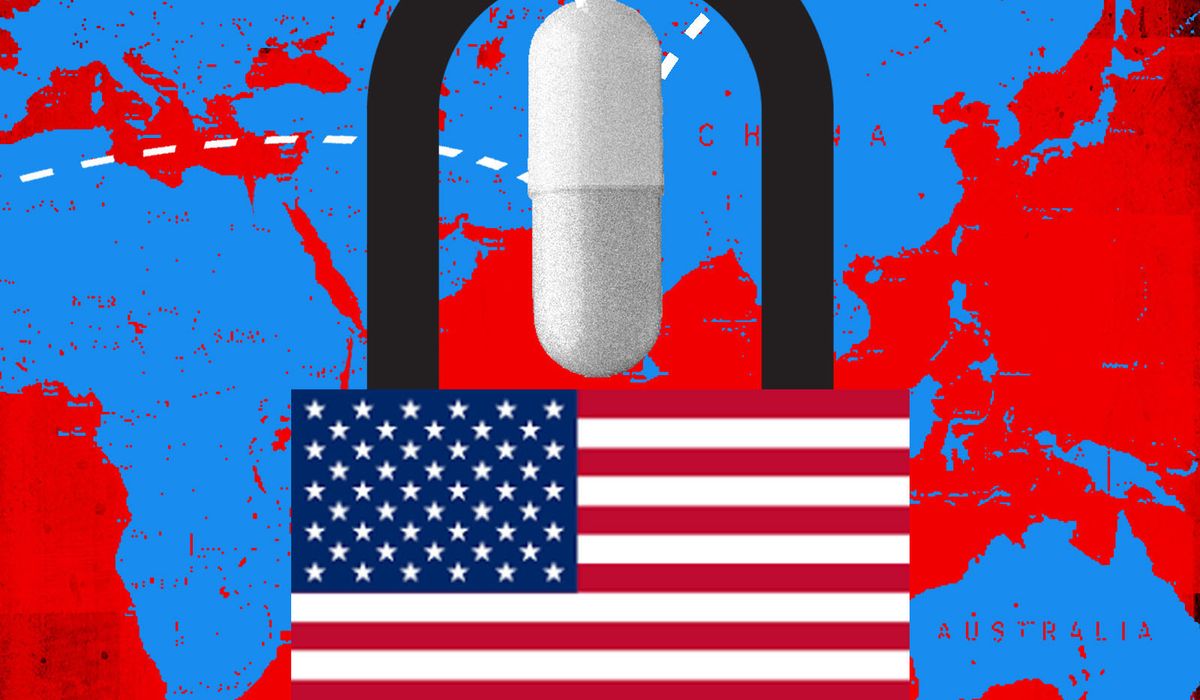


OPINION:
America cannot be secure, prosperous or sovereign if our medicine cabinet depends on foreign adversaries.
The pandemic emergency revealed the dangers of import dependence up and down the global drug chain. Hospitals rationed generics. Pharmacies couldn’t fill pediatric antibiotics. When Shanghai’s lockdown idled a single plant that makes the contrast dye used in computed tomography scans — the rapid X-ray images doctors use to spot strokes, clots and internal bleeding — U.S. hospitals spent weeks rationing scans. One overseas choke point rippled through American emergency rooms.
A lot of America’s generic medicines depend on active pharmaceutical ingredients sourced from China and India, and India relies heavily on Chinese inputs. That is a textbook strategic vulnerability.
President Trump’s strategy to address this vulnerability is three-pronged. First, his recent executive order readies and fills the Strategic Active Pharmaceutical Ingredients Reserve to stockpile the active pharmaceutical ingredients we need in a crisis. Second, the administration will harness federal purchasing to create durable demand for U.S.-made medicines. Third, we will harden supply by accelerating advanced manufacturing and building an early warning system for shortages.
On execution, the Administration for Strategic Preparedness and Response, overseen by the Health and Human Services Department, will identify roughly 26 especially critical drugs, update its 2022 list of 86 essential medicines and medical countermeasures, ready the Strategic Active Pharmaceutical Ingredients Reserve repository and, subject to available funds, acquire and maintain a six-month supply of active pharmaceutical ingredients. The Administration for Strategic Preparedness and Response will propose and cost out a second repository to eliminate single points of failure.
The reserve’s mission is simple: Maintain a reliable six-month buffer of active pharmaceutical ingredients so we can surge finished doses when a plant goes down, a port closes or an adversary tries to twist a supply chain screw.
To create durable demand, the administration will align the Department of Health and Human Services, the Veterans Affairs Department and the Defense Department, together the nation’s largest public purchasers of medicines, around multiyear procurements that prioritize U.S.-made active pharmaceutical ingredients and finished doses for a defined set of mission-critical generics. Predictable federal purchasing is the bridge that makes new domestic capacity financeable.
To harden supply, we will deploy Defense Production Act Title III tools to co-fund advanced and continuous manufacturing capacity, press for expedited Food and Drug Administration pathways for those technologies and stand up a national early warning system that detects and prevents shortages before they hit the bedside. The Treasury and Commerce departments will align tax and financing tools to reward onshoring and modernization, and the Department of Homeland Security and the Department of Energy will treat these plants as critical infrastructure, with the cyber and physical security standards they deserve.
Mr. Trump’s action is a continuation, not a reset. During our first term, at the president’s direct instruction and under an executive order drafted in my White House Office of Trade and Manufacturing Policy, we launched the federal government’s first end-to-end mapping of essential drug supply risk. The FDA published the initial list of essential medicines, medical countermeasures and critical inputs; the Administration for Strategic Preparedness and Response refined it to 86 essential medicines; and we built the playbook for resilience.
That’s why, in this second term, we’re moving from analysis to execution. We’re filling the strategic reserve of ingredients, updating the essential medicines list on a rolling basis, and using procurement and stockpiling to harden the system against shock.
Let’s be candid about the interregnum. Despite billions of dollars for “supply chain security,” the Biden administration failed to advance domestic sourcing or procurement for these medicines and their precursors, allowing the reserve to sit nearly empty. Mr. Trump is restoring momentum and continuity from lists to logistics, from temporary crisis response to permanent strategic capacity.
This strategy will also work hand in glove with pharmaceutical tariffs the president may impose under Section 232 of the Trade Expansion Act, pending a Department of Commerce report. Tariffs price in the geopolitical risks Americans already pay in shortages and recalls. Paired with multiyear federal purchasing, this strategy will create the investment conditions to rebuild core chemistries here at home.
To the private sector: This is your green light. Bring advanced capacity onshore, and patient and government demand will support it. To Congress: Fund the build-out, sharpen “Buy American” rules for medicines and give HHS the data authorities need to see and fix shortages before they start. To the American people: This is about more than medicine. It’s about strategic autonomy. It’s about never letting foreign powers hold our health hostage.
During the pandemic emergency, Chinese state media boasted that restricting medical exports would plunge the United States “into the mighty sea of coronavirus.” Today, Beijing is tightening the screws on other strategic inputs, restricting exports of gallium and germanium for chips and defense, graphite for electric vehicle batteries, and other critical materials such as antimony. This is proof that supply chain coercion is part of the Beijing playbook.
If China chokes off minerals that underpin clean energy and advanced electronics, it could certainly threaten the reagents, solvents and precursors that underpin modern pharmaceuticals. We can’t wish that risk away; Mr. Trump is designing against it. Domestic continuous manufacturing slashes waste, boosts yields and drives down unit costs over time. The strategic reserve keeps inventories reliable so no dose dies on a shelf, and predictable tariffs paired with long-term contracts dampen price volatility instead of importing it.
We are done letting substandard, state-subsidized producers undercut U.S. plants while shipping contamination and counterfeit risk. Mr. Trump’s pharma policy locks in quality, security and capacity. America first at the factory, America first at the pharmacy.
• Peter Navarro is the White House senior counselor for trade and manufacturing. Follow him at http://peternavarro.substack.com.
